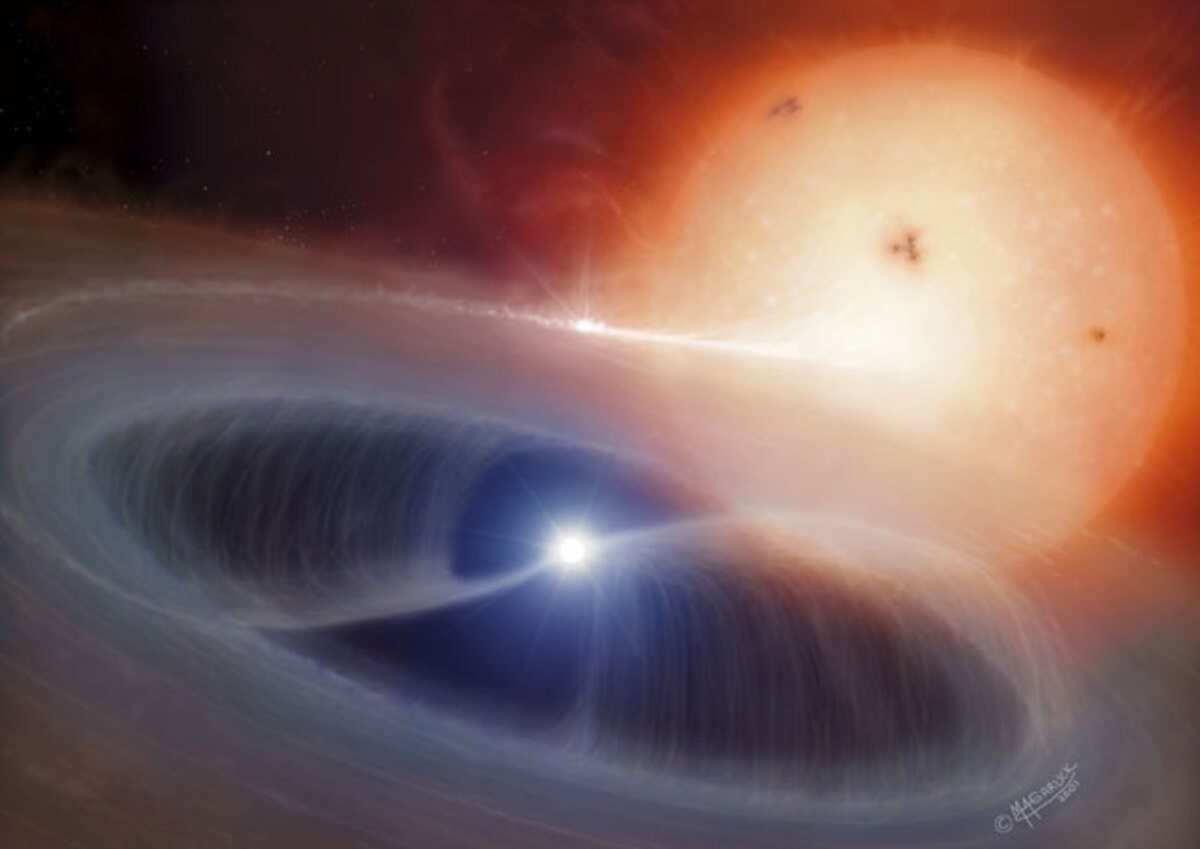
Space is awesome and stars are awesome and I love learning more about them. Here’s what I learned today: did you know that some stars can “eat” other stars? It’s true and more common than you might think. Multiple star systems make up about a third of the stars in our galaxy. and that doesn’t just mean that they’re binary stars. Star systems of three, four, five, and even six stars exist, which is awesome, just on its own. But we’re here to talk about star snacking.
So, stars can be born together, sort of like twins, but they can age, grow and burn through their stellar mass as different rates. It’s the larger of a pair that will blaze through its material the fastest, and which it’s done, it will leave behind a white dwarf star. Basically, that’s just the core of the star that remains after it’s burned through its nuclear fuel. It’s what our sun will become a long long time from now.
According to Space.com: “Although small and dim, white dwarfs can pack the mass of the sun into an object the size of the Earth. If close enough, the gravity of the dense objects can pull material from their companion, creating a signal that astronomers can identify from extremely far away.”
That’s a fancy way of saying that the white dwarf will start consuming the material of it’s larger sibling! Above you can see an artist’s rendering of what that might look like in an intermediate polar system, where the white dwarf’s magnetic field “significantly pushes out the inner accretion disk, only allowing material to fall down its magnetic poles.”
The really cool thing is that astronomers can tell these systems exist through the frequency of the light waves they observe from these stars! It actually comes from and observable instance of the doppler effect, the same effect on waves that makes a siren go “wooOOOOOOOOOOOOoooooooooooo” when it goes by. (Yes, I know that’s very scientific.)
And here’s where it gets even cooler, for the first time, astronomers have been able to observe this kind of symbiotic system in stars outside of the Milky Way. “Measuring the orbits of these symbiotic star systems is an important step towards learning whether other galaxies create binary stars like those in the Milky Way,” Jasmin Washington, a co-author of the new study and a graduate student at the University of Arizona, explained in a press release. “Very few symbiotic stars have ever been monitored long enough for astronomers to watch the full whirling dance,” says Hannah Lewis of the University of Virginia, Washington’s supervisor for the work, via the release. “And no one has ever done this in detail for symbiotic stars in other galaxies.”
Understanding what kind of stars and materials make up other galaxies is important because not all galaxies are the same. Some are bigger than ours, some are smaller, some are full of dark matter and some are thick with stars. Being able to map these very distant stars is a very cool thing and literally helps expand our understanding of the universe.
Pretty neat, huh?
Here are a few other things from space this week.
Have a great weekend, space cowboys and girls!
(via: Space.com, image: NASA/Mark Garlick)
Want more stories like this? Become a subscriber and support the site!
—The Mary Sue has a strict comment policy that forbids, but is not limited to, personal insults toward anyone, hate speech, and trolling.—
Have a tip we should know? tips@themarysue.com
